Rivalry Week is generally a good time for upsets and surprises in college football. Since we can't have nice things in 2020, we not only lacked a lot of the rivalries that define the week, we also missed out on a lot of intrigue. Among the top seven teams in the initial College Football Playoff rankings, four won easily, two dealt with unexpected bye weeks, and while No. 2 Notre Dame took some solid blows from No. 19 North Carolina, the Irish brilliantly suffocated the life from both the game and the upset bid in the second half.
Sure, No. 8 Northwestern lost, but a loss by a team as one-dimensional as the Wildcats (third in defensive SP+, 107th on offense) is never going to feel like an earth-shattering development.
Instead, the week was defined as much as anything by a recurring 2020 theme: disappointment.
Five teams that were ranked in the preseason top 25 are dealing with losing records. A couple more are barely above .500. Sure, part of that stems from the simple fact that they didn't have any/many nonconference games to prop up their records. Then there's the extra depth-chart damage everyone's been dealing with due to COVID-19.
That doesn't change the fact that we haven't seen what we expected to see from quite a few teams. Who gets a mulligan, and who has genuine concerns?
Mulligan Meter 2020
Note: We're not going to do any speculation about job security here. I'll leave that to far more sourced writers. This is purely a look at what has doomed these teams and how much of a mess the current coach has, or doesn't have, on his hands.
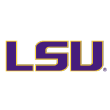
LSU
Preseason AP rank: 6th
Current record (and SP+ rank): 3-4 (54th)
Most likely regular-season record (per SP+): 4-6
Despite the incredible haul of draft picks that LSU lost last season (not to mention a couple of key coaches), the Tigers returned lots of proven talent, and their presumed starting quarterback, Myles Brennan, was a capable Joe Burrow understudy. There were still plenty of knowns to go with the unknowns.
But then Biletnikoff winner Ja'Marr Chase opted out. And all-world corner Derek Stingley Jr. began the season in the hospital. Brennan got hurt and was replaced by freshmen. Bo Pelini's defense suffered from nonstop communication issues early and has only recently begun to play decent ball. The run game has produced no big plays, and the passing game predictably trailed off.
Receiver Terrace Marshall Jr. tried his damnedest before opting out Sunday, and defensive newcomers like end Ali Gaye and linebackers Jabril Cox and BJ Ojulari have been solid from a playmaking standpoint. But the Tigers went from fielding a lineup chock-full of difference-makers to fielding one with a few at best.
Mulligan level (1-5 scale, with 5 being the most forgivable): 2. The QB situation will work itself out over time, and there's still obvious talent on the roster. Freshmen like Ojulari and tight end Arik Gilbert have backed up their blue-chip hype and should only improve. But the drop-off in raw talent from 2019 to 2020 was still jarring, and the fact that Ed Orgeron lost two brilliant young coaches (defensive coordinator Dave Aranda and 2019's passing game coordinator, Joe Brady) and replaced them with less innovative old hands (Pelini and Scott Linehan) was concerning from an "understanding what brought you success" perspective.
There's more turnover to come, and while it's not hard to see the makings of an improved team in 2021 and beyond, do we see a lot of championship parts here?
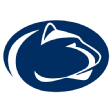
Penn State
Preseason AP rank: 7th
Current record (and SP+ rank): 1-5 (27th)
Most likely regular-season record (per SP+): 3-5
As with LSU, some of Penn State's issues can be gleaned from simply comparing last year's depth chart to this year's. The Nittany Lions headed into 2020 without by far their best receiver (KJ Hamler) and half of 2019's defensive starters, but then they also lost maybe the best defensive player in college football (Micah Parsons) to an opt-out and lost star running back Journey Brown to a career-ending medical condition. For good measure, new starting RB Noah Cain was immediately lost for the season, too.
It was easy to assume that Parsons' destructive presence and a dominant run game could paper over other potential cracks. Instead, PSU has had to figure itself out, and with no nonconference cushion.
Mulligan level: 3. The Nittany Lions' 0-5 start was a bit of a mirage. They outgained both Indiana and Nebraska by 200-plus yards in two of the most statistically unlikely losses of the season, and while 2-3 would have still been disappointing ... well ... 2-3 isn't 0-5.
They beat Michigan 27-17 on Saturday, and SP+ gives them a nearly 2-in-3 chance (64%) of winning their next two games, at Rutgers and Michigan State, too. Including the Big Ten's championship weekend pairing and a potential bowl, there's still a path to .500. That would still be underwhelming, but it would also build a "Rebound!" narrative.
That said, as with LSU, there's an alarming lack of surefire future stars on the field. The offense is one of the country's least explosive (1.3 gains per game of 30-plus yards, 106th in FBS), and the defense has drastically lacked in disruptiveness (6.0 tackles for loss per game, 66th). A young, high-upside team both makes and allows lots of plays; Penn State just sort of looks like a discount-brand version of itself. Experience will obviously help with this, but how much?
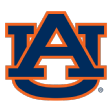
Auburn
Preseason AP rank: 11th
Current record (and SP+ rank): 5-3 (38th)
Most likely regular-season record (per SP+): 6-4
Auburn and the next team on the list have both enjoyed far more success than LSU or PSU in 2020, but their respective head coaches also entered the season with less built-up goodwill.
The Tigers have done the bare minimum required to finish with a winning record. They got stomped by two top-10 teams (Alabama and Georgia) but won two of three tight games against Arkansas, South Carolina and Ole Miss. SP+ gives them a 76% chance of finishing 6-4 or better.
Aside from a cathartic 48-11 blowout of LSU, though, they've in no way played like the No. 11 team in the country. A remodeled defensive line has provided little explosiveness, and coordinator Kevin Steele has had to go with far more of a bend-don't-break approach than he would prefer. On offense, running back Tank Bigsby has emerged as a potential star, but quarterback Bo Nix has been ... Bo Nix: definitively decent, and potentially nothing more.
Auburn ranked in the top five in offensive SP+ in Gus Malzahn's first two seasons and has ranked in the top six in defensive SP+ in each of the past three. This year, the Tigers are 48th on offense and 38th on defense.
Mulligan level: 2. It's Malzahn's seventh season as AU head coach, and assuming he gets an eighth year, he'll enter it with what should be the pieces of another strong defense. Only four of Auburn's top 16 tacklers are seniors, and young linebackers Colby Wooden and Owen Pappoe look like future stars. At the least, he'll have Bigsby and a more experienced offensive line, too. But you need an elite quarterback, or at least one with a potential Ian Book-esque late-career breakthrough, to play elite football in the 2020s. Does Nix have a major breakthrough in him? Can Malzahn find anyone to challenge him?

Texas
Preseason AP rank: 14th
Current record (and SP+ rank): 5-3 (24th)
Most likely regular-season record (per SP+): 7-3
Texas is, unlike any other team on this list, still a top-25 team per SP+, which gives the Longhorns a 68% chance of winning their final two games, at Kansas State and Kansas.
Despite an abbreviated schedule, quarterback Sam Ehlinger could finish his senior season with nearly as many passing yards and touchdowns as he had during the Longhorns' 2018 Sugar Bowl run. Plus, at 39th, the defense ranks higher in defensive SP+ than it has since 2017. With just a couple of bounces, Texas could be 7-1 or better.
The Longhorns could also be 3-5. Or worse. Despite quality recruiting and experience, the Horns have failed to dominate any team better than UTEP, and even at their best under coach Tom Herman, they pulled upsets or near-upsets of good teams while letting lesser foes hang around for far too long. Plus, Herman hired a new offensive coordinator (Mike Yurcich) this year and allowed the last guy (Tim Beck) to leave despite the Horns' breaking through to 10th in offensive SP+ in 2019. Now they're 22nd.
Mulligan level: 3. When Herman was hired, Texas had ranked 36th or worse in SP+ four years in a row. He has improved the Horns, but only barely. They ranked 30th, 32nd and 26th in his first three seasons, their record privy to the whims of the close games gods, and while they're currently 24th, they're also probably about to start over at the quarterback position.
Herman came to Austin with quite the pedigree, and I wouldn't suggest trying to replace him unless Texas can get a known, established star. But if you're going to experience a program breakthrough, it usually happens within three or four years. Herman is ending his fourth.
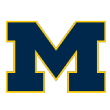
Michigan
Preseason AP rank: 16th
Current record (and SP+ rank): 2-4 (41st)
Most likely regular-season record (per SP+): 3-5
Michigan had finished in the SP+ top 15 just twice in its previous eight seasons before Jim Harbaugh came back to town; the Wolverines were 13th or better in each of his first five years. His problem through that half-decade was that UM's chief rival, Ohio State, was at or near its all-time high for consistent dominance, which made his Wolverines' performances pale in comparison.
His other problem: He has been chasing 2016 for four years now. Michigan came within an inch of the Big Ten title game and a potential CFP bid that season with one of the most terrifying defenses in recent college football history. But that defense slipped slightly in each of the following seasons. The offense bounced up and down depending on how good the transfer QB of choice was.
In 2020, everything has fallen apart. Don Brown's defense is 42nd in defensive SP+ and just allowed Penn State's Keyvone Lee to more than double his career rushing yardage in a single game. And with no transfers in the QB room, two youngsters have floundered. Joe Milton produced a 137.6 passer rating in his first three games and an 83.7 since. Freshman Cade McNamara produced a 164.3 off the bench and a 78.6 in his first start. The run game is occasionally explosive but dreadfully inefficient.
Mulligan level: 1. Michigan has no idea what it's good at at the moment. I don't know either. You shouldn't be producing by far your worst team in your sixth season in charge, and while youth has been a major issue in 2020, it's not accidental "key transfers/opt-outs and a big run of injuries" youth, even though there's been a bit of both. It's "we saw this coming and couldn't recruit or develop well enough to do anything about it" youth. Big difference.
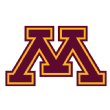
Minnesota
Preseason AP rank: 19th
Current record (and SP+ rank): 2-3 (46th)
Most likely regular-season record (per SP+): 3-4
Sometimes you don't know how important players are until you have to play without them. While Penn State's defense has struggled without Parsons, Minnesota's has absolutely bombed without safety Antoine Winfield Jr. and pass-rushers Carter Coughlin and Sam Renner.
The Gophers were 26th in defensive SP+ last season and are currently 91st. They have allowed at least 31 points in four of five games, and after starting their season at 16th in overall SP+, they're now 46th. The offense, brilliant for stretches of 2019, has been merely good, and now the Gophers are without star receiver and midyear opt-out Rashod Bateman.
Minnesota got destroyed by Michigan and Iowa, and it needed a controversial finish to beat Purdue and avoid falling to 1-4. SP+ projects the Gophers as slight underdogs in each of their last two games (Northwestern, at Nebraska) and gives them a 49% chance of finishing 3-5, 30% of finishing 2-6.
Mulligan level: 4. Head coach PJ Fleck gets a bit more of a mulligan here, if only because of degree of difficulty. All of the teams above the Gophers on this list are blue-blood programs with pedigrees that allow them to recruit at top-15 levels. Minnesota is not. Fleck signs top-40 classes and attempts to make up the difference with development, and that kind of program building will feature occasional setbacks when experience levels aren't quite right.
That said, the collapse by the defense is far more than a setback and should ring major alarm bells. Coordinator Joe Rossi brought about immediate improvement when he took over midway through the 2018 season, but he hasn't found any answers to fix the current woes, and the only statistical breakout performances are by upperclassmen like DE Boye Mafe and WR-turned-DB Phillip Howard. There are more questions than answers on that side of the ball.

Tennessee
Preseason AP rank: 25th
Current record (and SP+ rank): 2-5 (70th)
Most likely regular-season record (per SP+): 3-7
I really want to know what happened at halftime in Athens.
Tennessee was 2-0 and leading Georgia at halftime, but the Vols got outscored 27-0 by the Bulldogs in the second half, then got whacked by a combined 82-24 against Alabama (forgivable) and Kentucky (not so much). They jumped out to a 13-0 lead against Arkansas, then got outscored 24-0; they jumped out to a 10-0 lead on Auburn, then got outscored 30-7.
From 22nd in SP+, they have fallen to 70th. If they finish there, it'll be their worst ranking in 39 years. Quarterback Jarrett Guarantano's passer rating is the lowest of his career. Backup Harrison Bailey has been even worse. On defense, the Vols are good at preventing big run plays, rushing the passer on passing downs (getting burned badly if they don't get a sack) and almost nothing else. This collapse has been mind-boggling, even by Tennessee's standards.
Mulligan level: 1. Head coach Jeremy Pruitt has recruited well, as most Tennessee coaches do. His team came together beautifully late in 2019, his second season, and started on the front foot in 2020. For the Vols to collapse this suddenly and comprehensively -- and without a major run of injuries or opt-outs -- is almost inexcusable.
There are lots of sophomores and juniors among Tennessee's tacklers list, including disruptive linebackers Henry To'o To'o and Kivon Bennett, though the secondary -- the unit Pruitt has been most associated with in his career -- is a mess. On offense, the quarterback position seems to get worse each year, and nothing's going to get better until that changes. Can it change under Pruitt? And are there any young players to get excited about beyond maybe running back Eric Gray or receiver Jalin Hyatt?
Your culture should be settling in by Year 3. That the Vols basically let one second-half collapse wreck an entire season doesn't say very good things about the culture Pruitt is building.
A couple of quick thoughts from the weekend:
The Rutgers expansion draft worked
If or when the NCAA changes the transfer waiver rule and allows first-time transfers to change schools without sitting out, it could have a massive impact on rebuilding projects. And in signing nearly as many transfers as freshmen in his initial haul, second-time Rutgers head coach Greg Schiano has provided a chief case study for the possibilities here, for better or worse.
It's been mostly better. After winning just four conference games in the past four seasons, the Scarlet Knights are not only 2-4 in Schiano's first year back in Piscataway, New Jersey, they've come oh, so close to 4-2. They blew a late lead in a loss to Illinois, and they lost in triple-OT to Michigan.
Transfers haven't played an overwhelming role in their rousing start, but they've helped: Quarterback Noah Vedral has thrown for 1,104 yards, receiver Aron Cruickshank has been dangerous in both the passing and return games, tight end Jovani Haskins has two touchdowns, and safety Brendon White and tackle Michael Dwumfour have been two of RU's best defensive players. The upgrade in depth and experience is obvious, and combined with some extremely fun playcalling from new offensive coordinator Sean Gleeson, this team has been 4,000% more watchable than at any time in recent memory.
Football is a copycat sport, and immediate success is a good way to sell your vision to recruits. The way this is working out for Rutgers, I'm assuming we'll see a few more expansion drafts in the future.
A moment of appreciation for logic
Because the internet is the internet, and because everything in 2020 has to be polarizing, Vanderbilt's suiting up soccer goalkeeper Sarah Fuller and making her the first woman to ever play for a Power 5 conference football team was destined to become a divisive thing. It was a publicity stunt! She didn't even kick it that far!
I just wanted to take a moment, however, to admire the beautifully simple logic behind what ended up being one of head coach Derek Mason's final decisions as Vanderbilt's head coach.
1. Thanks to COVID-19, we suddenly have no kickers.
2. Who on this campus has the most practice kicking a ball long and straight?
3. Goalkeepers kick soccer balls long and straight!
4. Let's call the women's soccer coach!
Obviously we reserve the largest praise for Fuller herself. She knew she might become a lightning rod of sorts -- on the internet, perhaps within the team, and everything in between -- for saying yes to the invitation. But she did exactly the job she was asked to do and broke down a barrier while she did it. I got to watch her kick off with my daughter in the room, and I think it made her actually like football for a second.
Mason deserves his share of praise, too. He has long been regarded as one of the better dudes in the coaching business, and even if he wasn't good enough to keep pushing one of the heaviest boulders in college football -- the one named Vanderbilt football -- up the proverbial hill, he didn't let preconceived notions or institutionalized barriers keep him from following his logic. Kudos all around.
